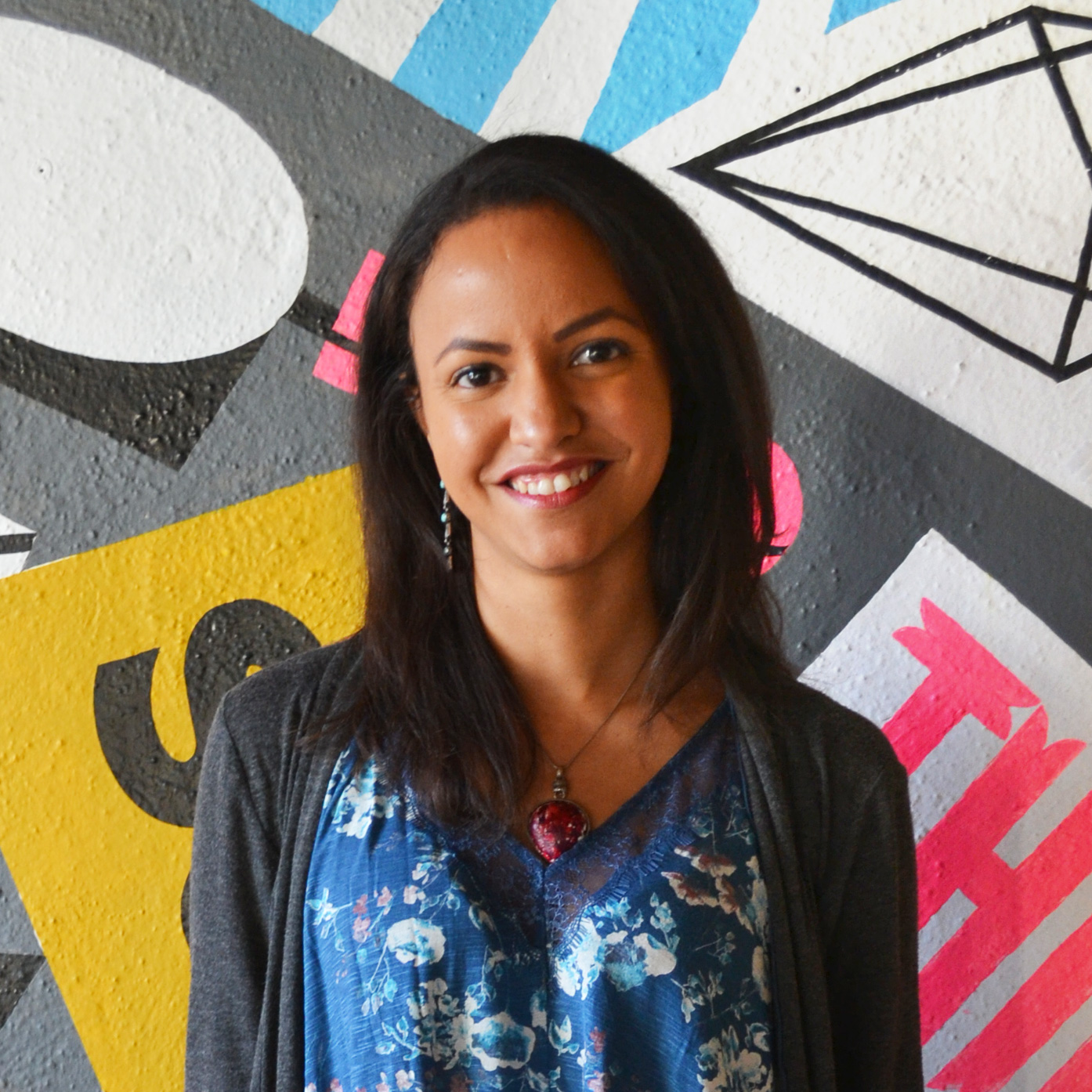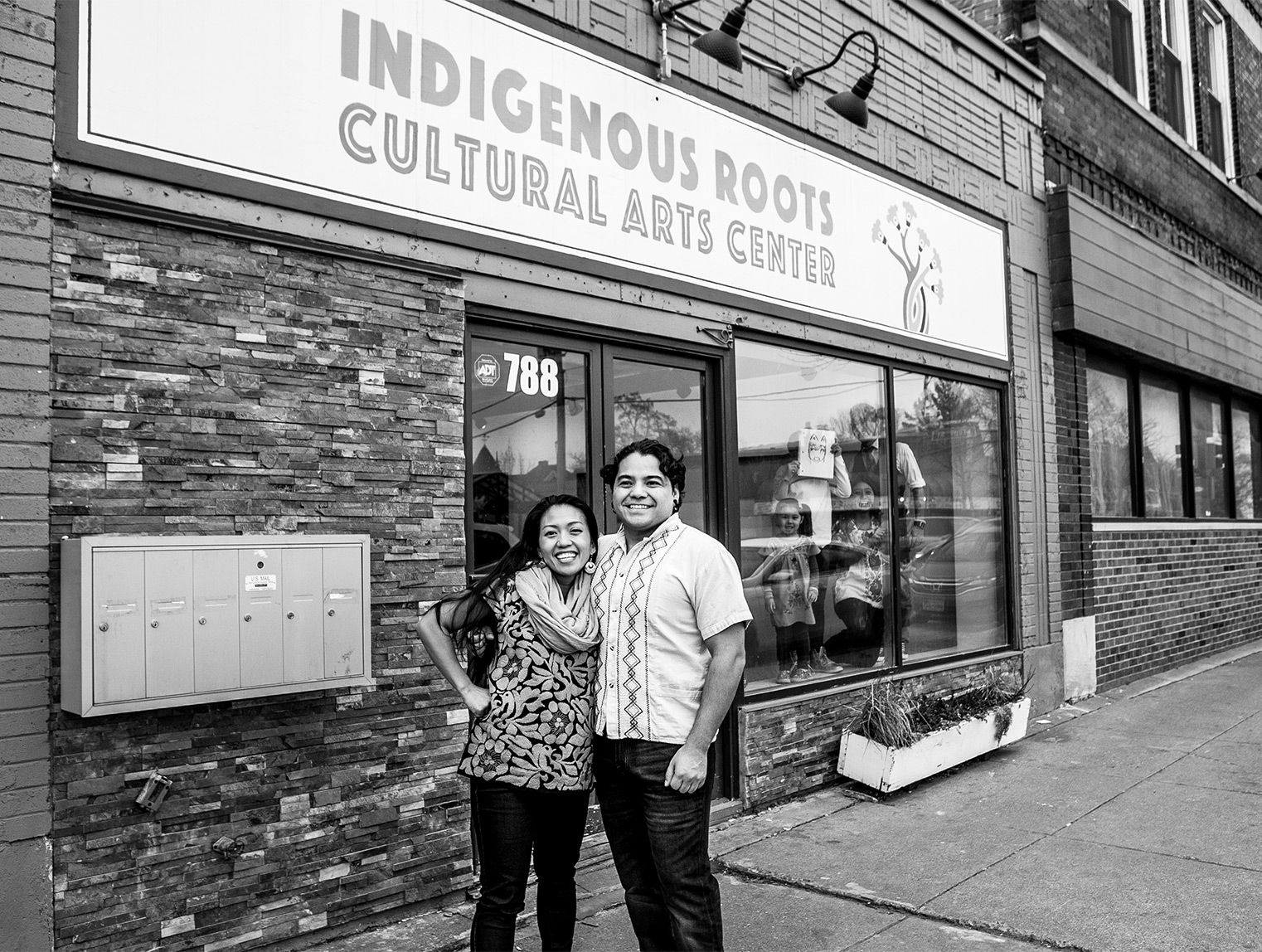

Story by Melissa Olson
Photography by Ryan Stopera
Inside the Indigenous Roots Cultural Center on St. Paul’s East Side, Sergio and Mary Anne Quiroz have almost finished installing a new dance floor — the taped-down edges of the new wood resemble a large jigsaw puzzle. Sergio and Mary Anne are dancers, social justice organizers, and founders of an artist collective established within Indigenous Roots Cultural Arts Center. The floor inside the center’s dance studio is as much a symbol of their unfolding dreams as it is proof of their determination.
In May of 2017, the cultural center opened with an invitation to honor community elders and offer a blessing for the new space. A Hmong elder, aided by his daughter, was the first to answer the call. Carrying a tree branch, the man swept clean the building’s floors and corners. He said nothing while he worked, and when he was done, he chucked the branch out a rear door, turned to his daughter and asked her to translate for him, “Don’t bring it back inside!” he said.
“He swept out the energy that doesn’t belong here,” explained Mary Anne Quiroz. For two days following the blessing, Indigenous Roots celebrated the launch of their new home through dance, song, and an exhibition of visual art.
“The launch was the culmination of years of work.”
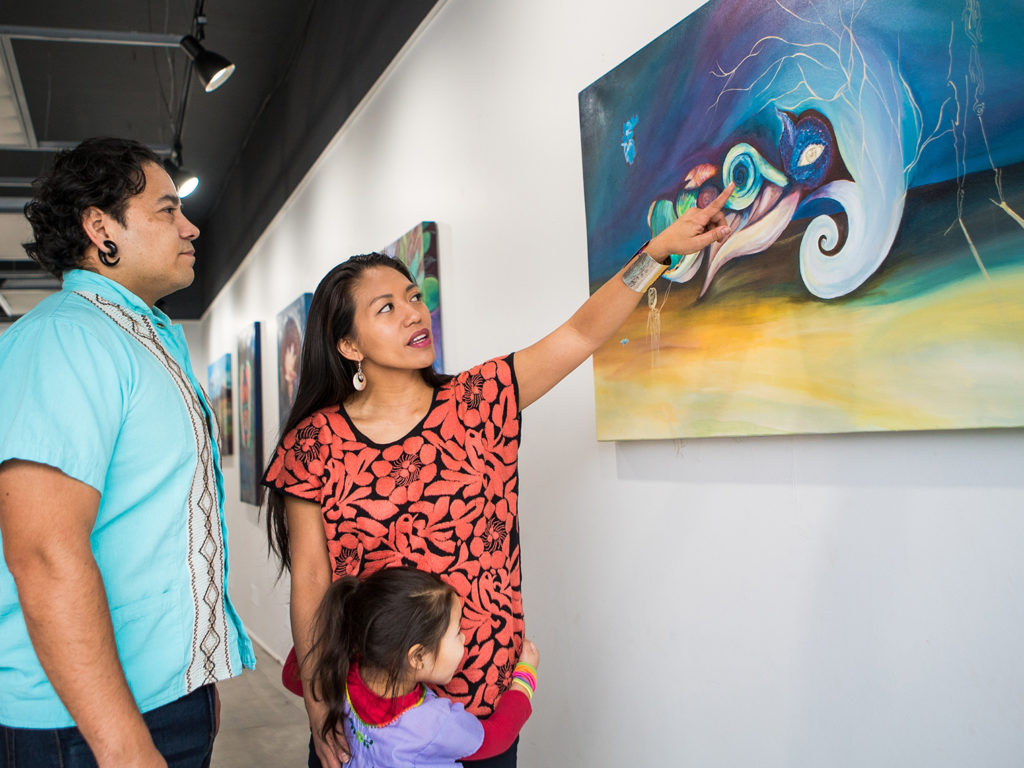
“The work of artists, healers, activators, and agitators who had been doing work in this community, and I don’t mean just the East Side, or St. Paul, but everybody who does this work,” says Mary Anne.
Six months earlier, Dayton’s Bluff Community Council had hired Mary Anne to develop a new model to bring arts and culture activity to the Dayton’s Bluff neighborhood. Prior to this, Quiroz was organizing pop-up arts events in a temporary commercial space near the intersection of Arcade Street and E 7th Street. When the building at 788 E 7th Street opened up, a group of artists led by Quiroz moved into the space.
The collective began as a community of artists striving to meet the growing need for communities to re-connect with ancestral knowledge systems—communities whose roots reach from Indigenous communities in Minnesota to Mexico, Asia, the Caribbean, West Africa and back. The new center has quickly become a pillar of St. Paul’s East Side, offering a weekly calendar of arts events and classes. It’s also a place where artists often lead movements for social justice and neighborhood revitalization.
Mary Anne and Sergio see their own life stories interwoven into the larger story of their neighborhood.
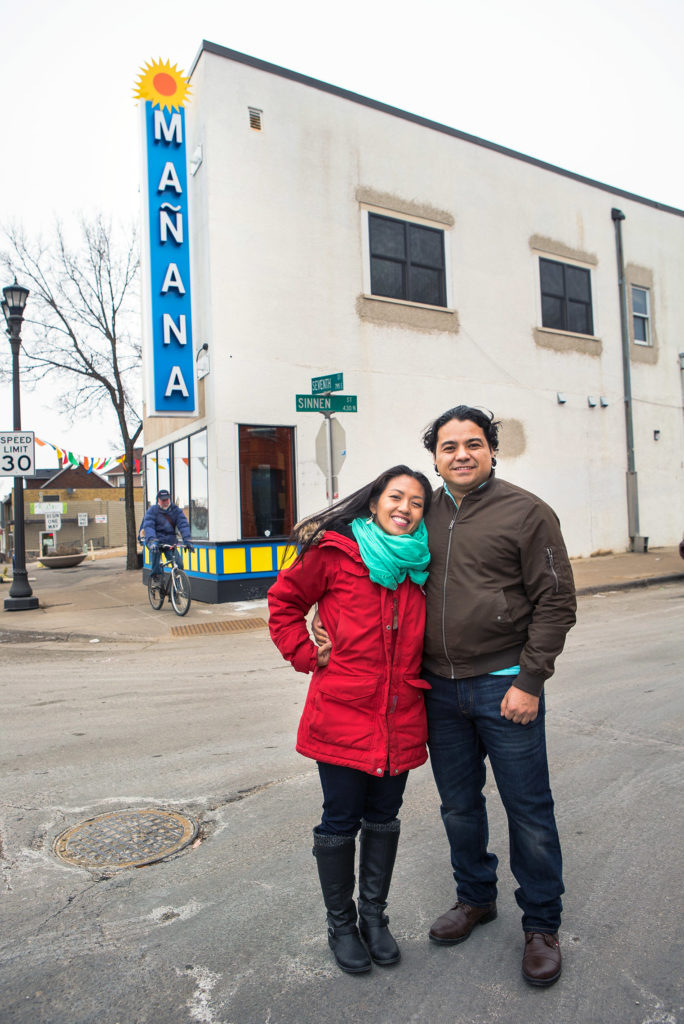

Mary Anne Ligeralde’s family immigrated to the East Side of St. Paul from the Philippines, the same year Sergio Quiroz’s family would arrive from Mexico. The two met in the 7th grade, and graduated from Johnson High School. Mary Anne recalls their parents held fast to the expectation the young couple would graduate high school. Beneath a photograph in their high school yearbook, they had listed their individual goals.
Mary Anne would go on to pursue a nursing degree and Sergio would start his own business. The young couple had become parents to an infant son, and the photo’s caption described their desire to provide him with a cultural education, “They also want to go to Mexico to show their son a part of his heritage as well as buying a home.” It is this final goal that would come to define their life’s work.
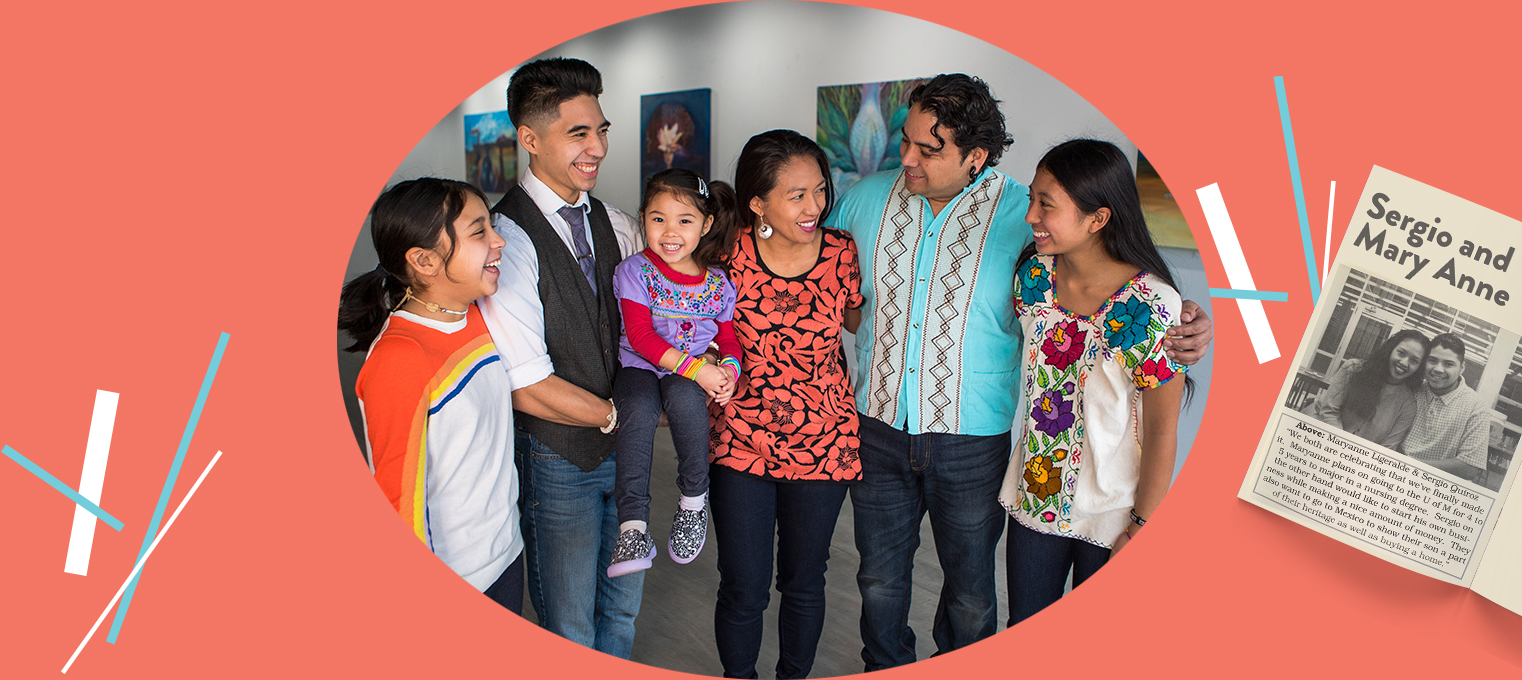
To operate the new center, Dayton’s Bluff Community Council and Indigenous Roots made a joint agreement:
The council paid the rent and utilities and Indigenous Roots offered arts and cultural programming.
In exchange for rehearsal and performance space, artists donated their time and creative talent to renovate the building. The partnership between Dayton’s Bluff and Indigenous Roots sparked hope that an artist-led economic development model would help to think creatively about the economic challenges faced by the neighborhood.
It was a stellar first year for Indigenous Roots. But as 2017 drew to a close, dark clouds were drawing in. At a public meeting in December, Mary Anne Quiroz was stunned to learn Dayton’s Bluff Community Council’s finances had changed, and Indigenous Roots would be left to reconcile how best to move forward on their own.
The situation was dire. When Mary Anne and Sergio returned to the center in January of 2018, they knew that without support, the collective stood to lose everything: the building into which they had poured so much sweat equity, the momentum of their still-growing artists’ movement, and the space they’d carved for themselves in a community that needed their work. But it wasn’t the end: the East Side community rallied around the collective, raising enough money to keep the center’s doors open for a couple of months.
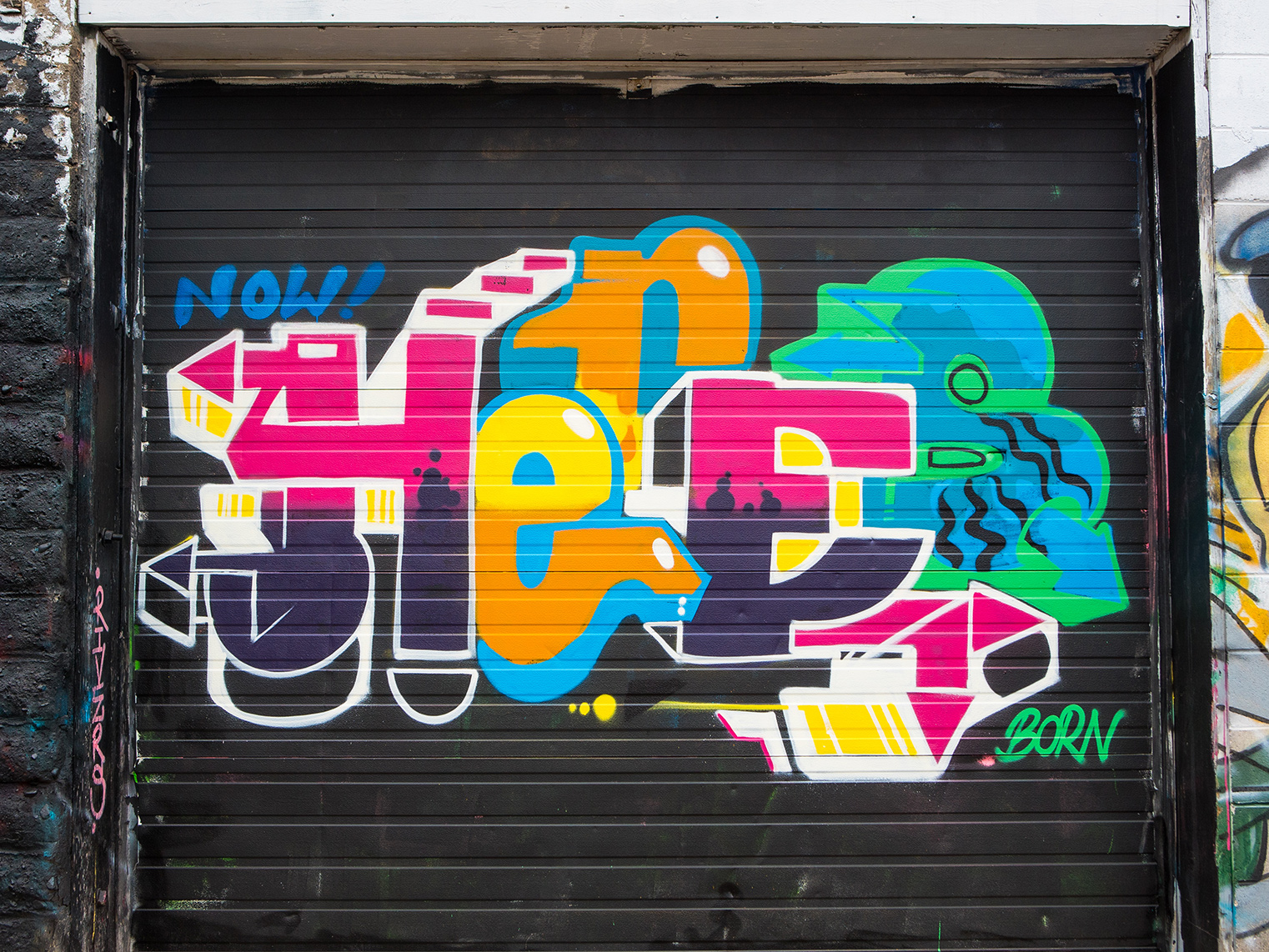
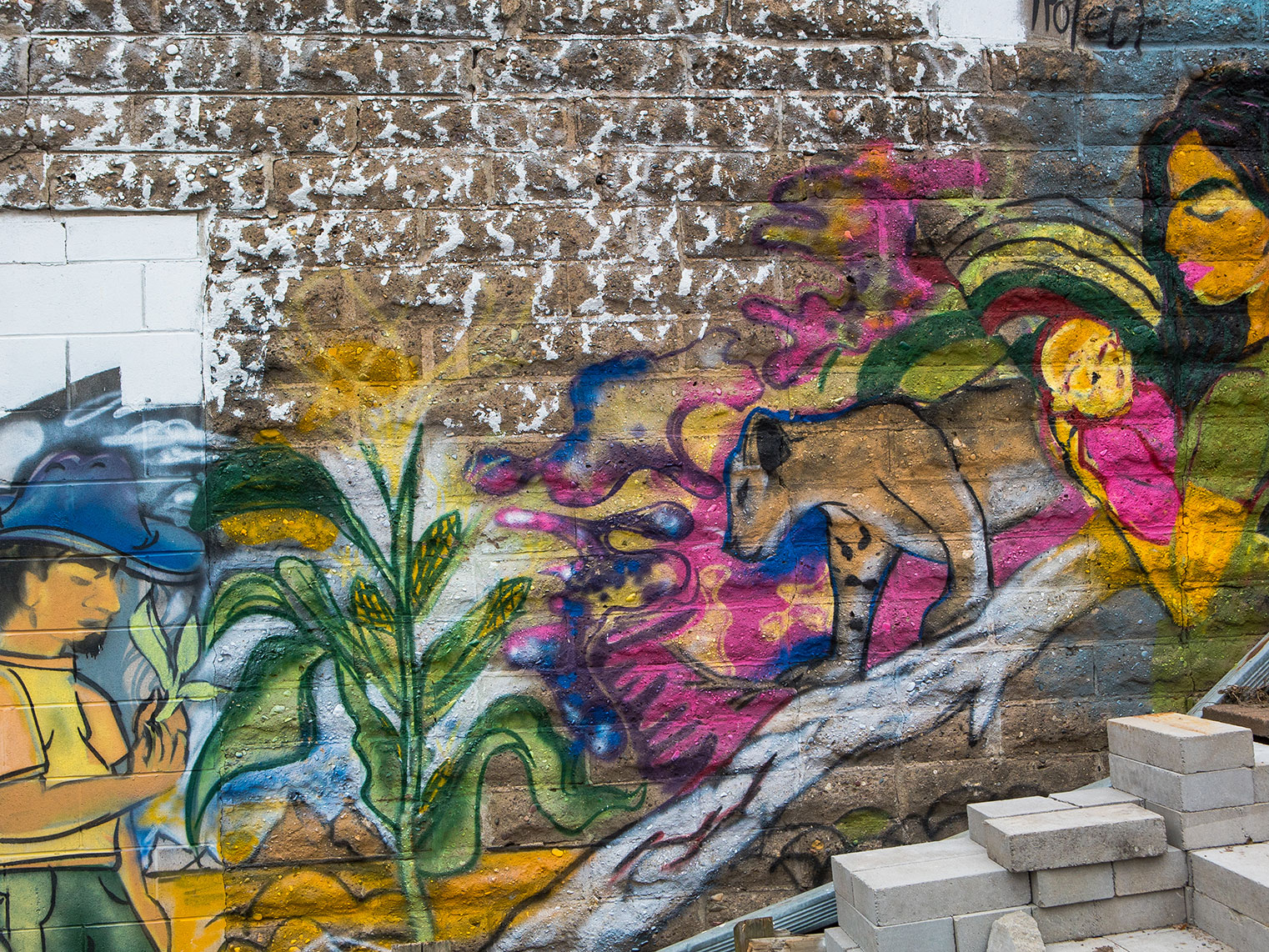
Heartened by community support, Mary Anne and Sergio began to set in motion a plan to purchase the property. They couldn’t afford a conventional loan, so they hoped the owner would agree to a contract for deed — a plan that would allow them some time to buy the property.
As it turns out, time was not on their side. In late March of 2018 a private developer arrived at the center to discuss his plan for developing East 7th Street. His plan encompassed several blocks — a mix of high-end and affordable housing, a new restaurant, parking lots — maybe a brewery. Mary Anne was wary.
“We didn’t hear a way for neighborhood renters to remain in their homes, or a way for family owned shops to remain in business.”
She wasn’t surprised when, later that month, the developer made an offer to the owner to purchase their building as a part of a multi-property deal. The Quiroz’s contract for deed plan was off the table.

Stories of Indigenous Roots’ dilemma had begun to filter through the St. Paul community, and eventually reached Kathy Mouacheupao — then a program officer for the Local Initiatives Support Coalition (LISC). LISC is a national organization that is committed to finding equitable ways to invest in the people, places, and projects that strengthen Twin Cities communities. Kathy was leading LISC Twin Cities’ creative placemaking program and was keenly invested in LISC’s philosophy of community development: When local communities decide their own futures, they can thrive.
“I think the way that I learned how to do development work at LISC was really as an anti-displacement tool,” says Kathy. “We talked about highlighting local diversity, bringing neighborhoods closer together and boosting neighborhood economy through arts and culture.”
And for Kathy that means supporting artist organizers like Mary Anne Quiroz, and organizations like Indigenous Roots. “It’s these individual artists who are organizers, who are deeply rooted in community, and have really strong networks that help build or re-build communities,” Kathy says. “Mary Anne has all of those qualities about her.”
Kathy and others went to work telling Indigenous Roots’ story to community lending partners. Within a matter of weeks, Mary Anne Quiroz received a phone call from the Land Bank Twin Cities, a community-based entity that specializes in assisting organizations with acquiring property. The Land Bank explained they had heard Indigenous Roots’ story and wanted to help.
That May, a year after the blessing of the new center, the Land Bank, Mary Anne and Sergio sat down to write a purchase agreement. By August, The Land Bank formally acquired the property from the previous owner and with the help of a small grant from LISC, Mary Anne and Sergio signed the agreement on behalf of Indigenous Roots to purchase the building over the next three years.

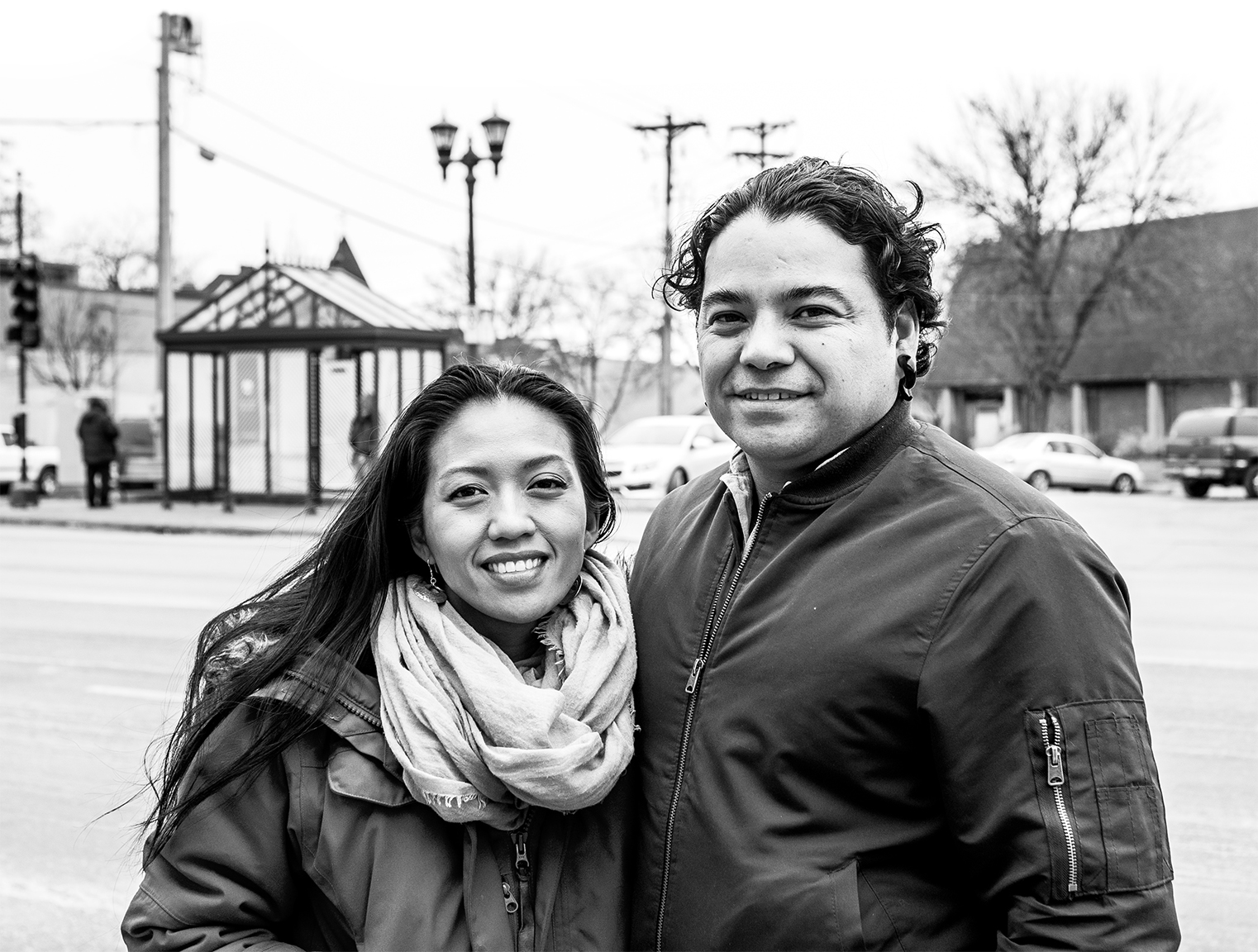
Indigenous Roots is looking ahead to a fruitful 2019 when they will launch a capital campaign to raise the rest of the money needed to purchase their building outright. Mary Anne and Sergio Quiroz continue to lead the East Side community in creating spaces where artists rooted in their communities can work together to define their own financial well-being and continue leading in community change and transformation.
“I know it sounds cheesy, but it’s been magic seeing all of this happen,” says Kathy. And if there is some magic here—in the way several cultures found a home in St. Paul’s East Side, in the way that Mary Anne and Sergio found their leadership, and in the way a community fought for an organization that meant so much to them—it’s the kind of magic that more neighborhoods could use, in St. Paul and beyond.
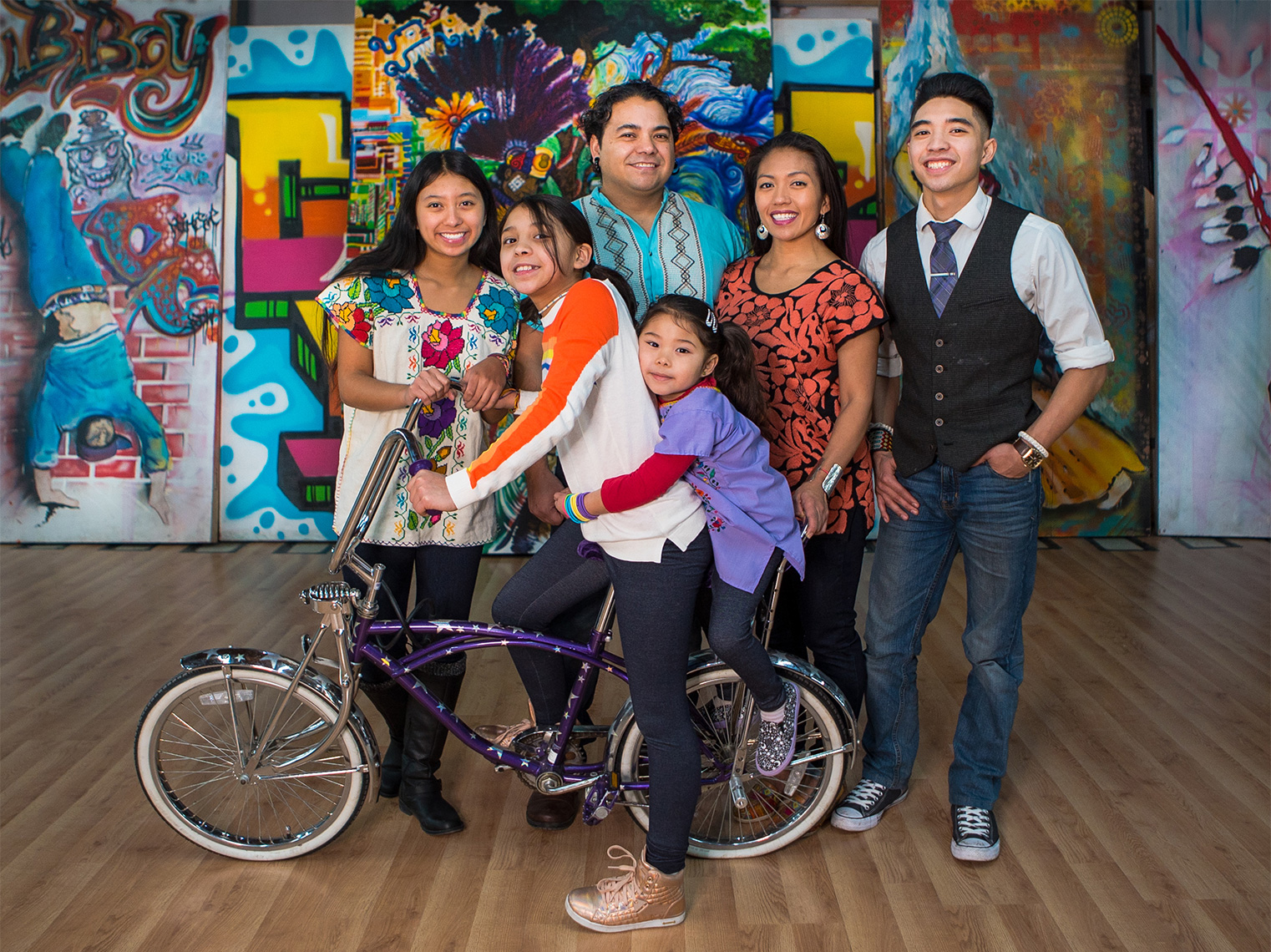

Contributors


